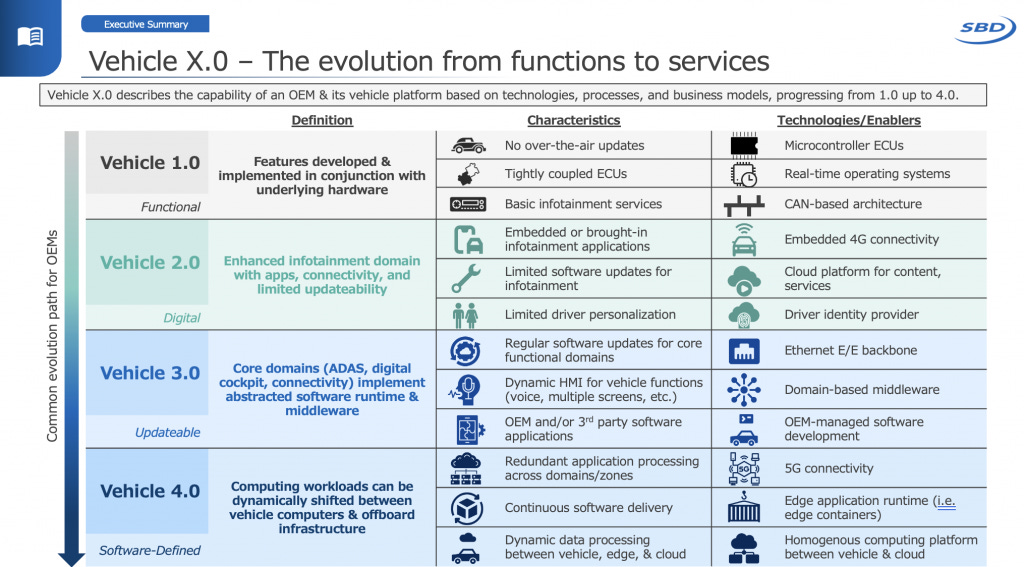Driving into the Future: An Overview of Software Defined Vehicles
Evolution of Vehicle to SDV
Buckle up, gearheads, because the automobile is undergoing a revolutionary transformation. We're not talking about sleek new designs or fuel-efficient engines – we're hurtling towards a future where your car is as much software as steel. Enter the realm of Software Defined Vehicles (SDVs), where lines blur between hardware and digital magic.
From Tin Cans to Tech Wizards: The Evolution of Automobiles
For decades, cars were intricate tangles of mechanics and combustion engines. Think gears, pistons, and carburettors – a symphony of physical parts choreographed by the driver. The "evolution" meant bigger engines, smoother transmissions, and maybe a fancy stereo.
But the winds of change are whipping through the industry. Electronics gradually infiltrated, bringing fuel injection, anti-lock brakes, and rudimentary infotainment systems. This was the first tremor, hinting at a seismic shift to come.
Then came the computer revolution. Engines learned to think, adjusting fuel mixtures on the fly. Sensors sprouted like nervous system tendrils, feeding data to onboard computers that monitored everything from emissions to tyre pressure. Driver assistance systems emerged, nudging us towards a future where the car becomes an intelligent partner.
This is where we stand today, at the crossroads of mechanical marvel and digital playground. We're witnessing the birth of SDVs – vehicles where software takes the wheel, transforming them from mere modes of transportation into customizable, connected, and potentially autonomous companions.
The Evolution of the Connected Car: From Hardware Haven to Software Hub
Imagine viewing a car not just as a machine, but as a platform for continuous improvement. This is the essence of the Software-Defined Vehicle (SDV) concept. A recent report by SBD analyzes this evolution through four distinct stages, offering a fascinating glimpse into the future of automobiles.
Vehicle 1.0: The Hardware Haven
Think of the classic car - a mechanical marvel, but with limited electronic control. Features are entirely dependent on the physical hardware, offering little room for updates or customization.
Vehicle 2.0: The Digital Dawn
This stage ushers in the era of infotainment systems and connectivity. Cars become smarter, offering features like navigation and hands-free calling, often connected through 2G or 4G networks. In India, a large portion of vehicles fall into this category, boasting infotainment systems compatible with smartphone mirroring technologies like Android Auto or Apple CarPlay.
Vehicle 3.0: The Updatable (Vehicle 2.5 in India)
Luxury car segments in India are leading the charge towards a slightly more advanced stage. Here, we see the introduction of driver-assistance systems (ADAS) reaching up to SAE Level 2 in some cases. Large infotainment screens become commonplace, capable of running a wider variety of applications and connecting directly to the internet.
However, this stage also highlights the challenges faced by the Indian automotive ecosystem in adopting cutting-edge technologies. For instance, the development of in-house software by Original Equipment Manufacturers (OEMs) and the implementation of domain-specific middleware are still in their early stages. Transitioning to these advancements requires significant investment and a shift in traditional OEM work practices. Developing the necessary skillsets and organizational structures is critical for success. Essentially, moving from a hardware-focused mindset to a software-centric approach, similar to a tech startup, is key.
Vehicle 4.0: The Software Superstar
This stage represents the pinnacle of software-driven value creation. Hardware components become standardized, offering less opportunity for differentiation among OEMs. A good example is suspension tuning, which was once a key area of competition. Today, advancements have led to robust suspension systems across most manufacturers. The true differentiator in Vehicle 4.0 vehicles lies in the software. These Software-Defined Vehicles are paving the way for a new era, led by innovative carmakers like Tesla, BYD, and NIO. Traditional OEMs are racing to catch up, with initiatives like the Volkswagen Group's CARIAD, Ford's investments in software development, and GM's partnerships aimed at building an SDV ecosystem. Further disrupting the landscape are companies like Xiaomi, leveraging their mobile phone and software expertise to enter the car manufacturing space and offer customers cost-effective, technologically advanced vehicles.
Remember that old controversy about cars becoming just "mobile phones on wheels"? Well, turns out there might be some truth to it – but with way cooler features (and hopefully fewer dropped calls)!
The automotive industry is on the cusp of a revolutionary shift. As software takes the wheel, vehicles transform from mere machines into dynamic platforms with the potential for continuous improvement and personalization. Buckle up - the future of driving is about to get exciting!
References:
This blog is edited with the support of Google Gemini.



